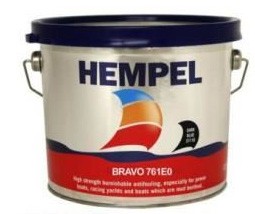In order to protect the underwater part of your boat’s hull from the harmful effects of algae and shellfish, you have chosen a hard matrix antifouling. And now that you have it in your hands, all you have to do is apply it using the right method.
Why choose a hard matrix antifouling?
If you have chosen a hard matrix antifouling if you have chosen a paint, it is because you are aware that this is the paint that best corresponds to your selection criteria. These include the type of boat you have, the area in which you sail and the frequency of use.
With regard to the type of boat, this protective paint is best suited to motorised boats with a sailing speed of over 25 knots. In general, it is perfect for polyester, steel or wooden hulls, except for aluminium and other light metals.
In terms of the environment in which it is used, think of this category of antifouling as being perfect for tidal areas, currents and long crossings. The fact is that with its hard matrix, it is designed to withstand rubbing, beaching, sand or even trailer rides. The same reason that makes this paint the best choice for frequent use
Equip yourself properly
You have chosen to do without the services of a professional. In that case, you need to equip yourself properly in the following steps.
Starting with the preparation phase of the hull, during which you will need a high pressure cleaner. But not only that, since sanding and stripping are also part of the process and require a scraper or water-based abrasive disc and antifouling stripper respectively.
You should also think about the materials needed to apply thehard matrix antifouling by equipping yourself with masking tape and thinner (optional). And since we’re talking about paint jobs, don’t forget the mixer, the paint tray, the rabbit’s foot and the support that goes with it.
In any case, don’t forget to protect yourself by wearing a mask, overalls, glasses and gloves.
Work like a specialist
Now that you have the necessary materials for the application of thehard matrix antifouling, all that remains is for you to work like a specialist, starting with the cleaning.
During this stage, your first objective is to remove the dirt from the hull using a high-pressure cleaner.
After that, make your hull look smooth to the touch by using the squeegee or water abrasive disc. This is the phase of scraping the surface, particularly targeting large imperfections.
If necessary, do not hesitate to use antifouling stripper for a final touch to remove all impurities. This is the optional stripping step.
Now that the hull is clean, remember to protect the unpainted surfaces by using masking tape. And above all, don’t forget to mix the antifouling well in order to make it homogeneous. This should be easy with the help of an electric drill or mixer.
Then you are ready to apply the hard matrix antifouling using the above-mentioned painting tools. A crucial phase that is carried out in two major steps:
- Application of the first coat followed by a drying time of 3 to 4 hours at 20°C;
- The application of the second coat followed by a drying time of at least 3 hours.
Please note: The application should be carried out in criss-cross patterns with emphasis on high friction areas. It is also advisable to allow 24 hours before applying the product to the water. at least 4 hours in case of stress.






